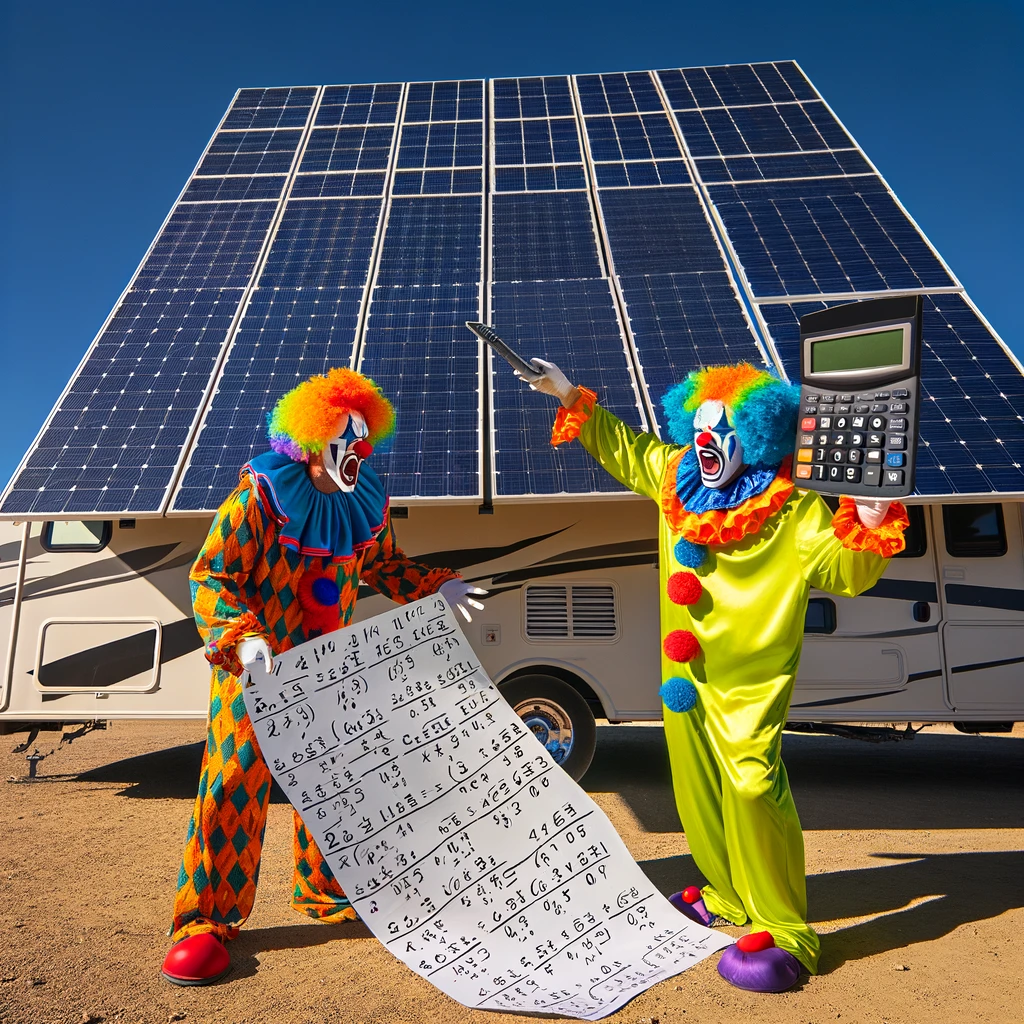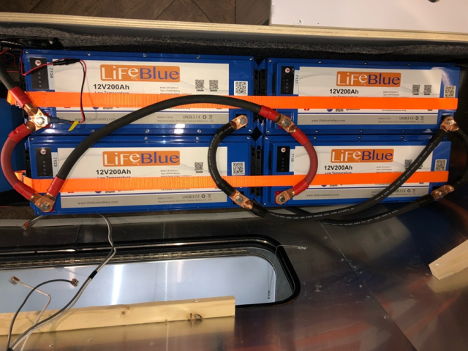RV Storage: Storing a solar equipped vehicle for long periods of time (a month or more) takes considerations to avoid battery damage.
RV owners often overlook proper off-season storage of batteries. When your vehicle is left in storage, it is important that the batteries aren’t drained past a certain point. If they are lead-acid batteries (including AGM), it is also important to give them a frequent full charge at certain intervals. Lead-acid batteries will discharge over time and must be maintained, even if they are not being used. The rate of self-discharge depends on the batteries’ design and the temperature. Flooded batteries have higher self-discharge rates than AGM batteries. Higher temperatures increase self-discharge, which is why batteries should be stored in a cool place. Lithium batteries have virtually no self-discharge.
For all lead-acid batteries, proper storage requires the vehicle’s shore power cord to be plugged into a reliable electrical outlet and your inverter/charger sending power to the batteries. If power is lost or cut off, your batteries may drain to the point where damage could occur. We have heard too many stories about clients who put their rig in storage, expecting a stable shore power connection, and coming back months later to find a ruined battery bank and an unplugged cord or tripped breaker.
Flooded and AGM Batteries – Tips For storage inside: If they are being put into long-term storage without any loads active to drain power, we recommend starting your storage tenure at 100% and maintain one full charge at least every 3 months. If they are being put into long-term storage with devices powered on and any loads active and draining power, we recommend a full charging cycle at least every 2 weeks.
Flooded and AGM Batteries – Tips For storage outside: Another option is to use a small solar array (typically 100 watts) with an appropriate charge controller, leaving the solar active to maintain battery charge. But, if your solar array gets covered, it won’t produce power and your solar charge controller will actually draw power from the system which can contribute to crashed batteries. If you store your rig under a cover, you should turn off the breaker, or remove the fuse, between the charge controller and the battery system.
If it is not possible to keep the RV plugged into a stable power supply, or use a solar array, you can remove the lead-acid batteries from the vehicle completely. They should be fully charged, then stored in a cool, dry place where they can be maintained by charger with a more stable source of power. This is particularly important in cold climates where a discharged battery is likely to freeze.
Lithium batteries are treated much differently. They have a very low self-discharge rate, and can hold their voltage for up to a year before needing a charge. Therefore, they don’t need to have a shore connection while in storage. If your system has a master electrical ON/OFF switch, you should turn it OFF when in storage. You should also turn OFF the master solar ON/OFF switch. Lithium batteries should be drained anywhere from 80% to 50% State of Charge (SOC) before being placed in storage.
All batteries should be given a full charge immediately after they are reinstalled in an RV.
PRO RVer tip: Part of your regular maintenance plan should include checking the tension of any battery straps. As rigs move down the road in their regular use, tension can be lost. By making re-tensioning a part of your regular maintenance plan you can ensure that your batteries will stay put where they belong.
Here are three examples of RV storage and what steps are needed for each:
A) Park it outdoors.
-
Log all issues found or fixed before you store your solar equipped RV and write them down.
-
Turn OFF all the loads that can be turned OFF. This includes DC loads coming directly from the battery and AC loads using the inverter or shore power.
-
For Flooded and AGM Batteries: Leave solar and house battery charge circuit ON and walk away. A well designed/matched Solar System should be able to keep the batteries in an operational condition so long as there are no loads left running. Loads could cause the batteries to be drawn down below the capability of your solar system.
-
For Lithium Batteries: Turn OFF the Lithium Master Disconnect switch to prevent current from entering or leaving the lithium battery bank.
B) Park it inside (like a Storage Facility or Garage) and walk away.
-
This is a bad idea for anything but lithium batteries – Only lithium batteries can be left for extended periods of time without being charged. All Flooded batteries (including AGM) must have a charging source for maintenance. Don’t do this unless you have lithium batteries.
-
Log all issues found or fixed before you store your solar equipped RV and write them down.
-
Turn OFF all the loads that can be turned OFF. This includes DC loads coming directly from the battery and AC loads using the inverter or shore power.
-
Turn OFF the Lithium Master Disconnect switch to prevent current from entering or leaving the lithium battery bank. Ensure you have turned the solar input switch to OFF as well.
C) Park it at a Fully Staffed Storage Facility where your rig will be monitored
-
Log all issues found or fixed before you store your solar equipped RV and write them down.
-
Turn OFF all the loads that can be turned OFF. This includes DC loads coming directly from the battery and AC loads using the inverter or shore power.
-
For Flooded and AGM Batteries: Ensure your inverter/charger is receiving power from a dedicated shore power connection, and is in charging mode. Ensure your master inverter ON/OFF switch is turned to “ON” to allow shore power through to your batteries and keep them charged. Turn your solar ON/OFF switch to OFF.
-
For Lithium Batteries: Turn OFF the Master Disconnect switch to prevent current from entering or leaving the lithium battery bank. Turn your solar ON/OFF switch to OFF as well. Lithium batteries are expensive, don’t take any chances by storing them on and powering equipment.
For more information about how to properly store your rig during the off-season, please send an email to info@amsolar.com with details on your battery type, method of storage (covered or not) and other power equipment. We will happily give you tips specific to your situation.




